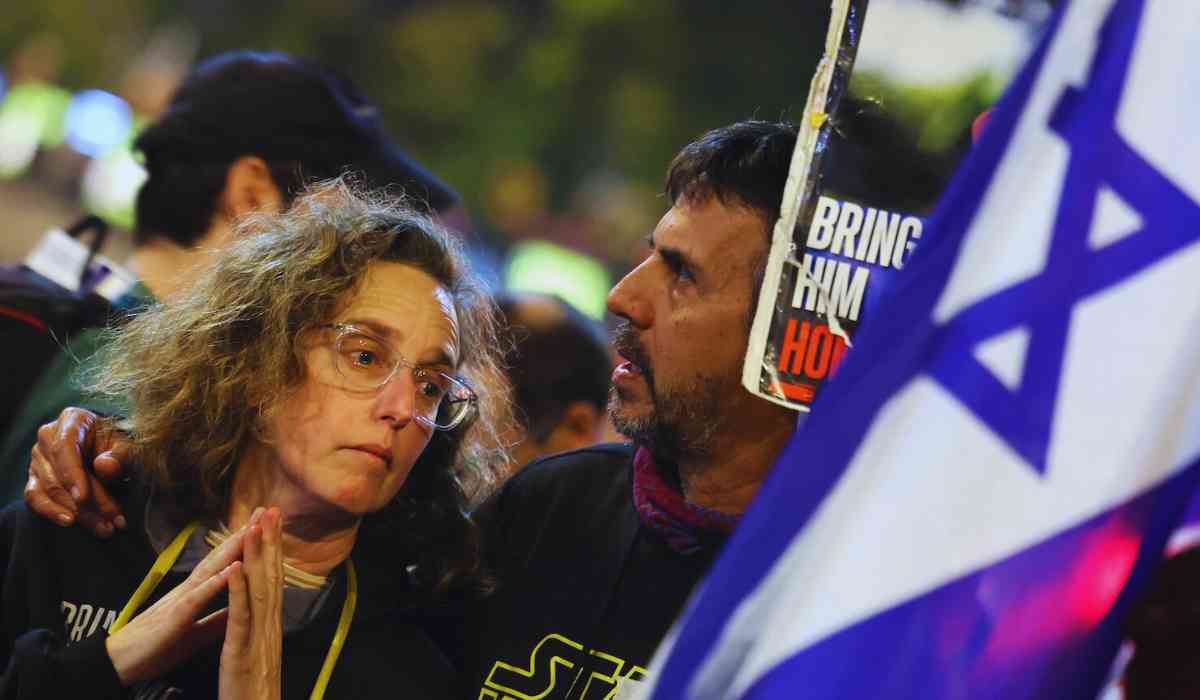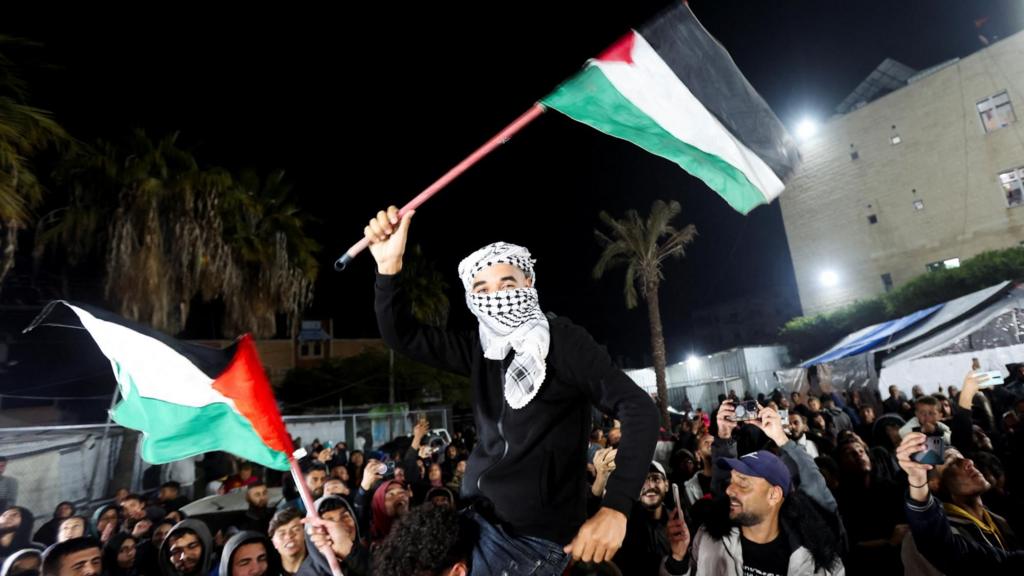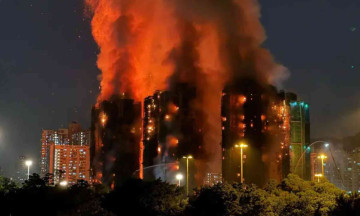Update
Israel's cabinet has postponed its scheduled vote on a ceasefire deal with Hamas, which was set to begin on January 19, 2025. Prime Minister Benjamin Netanyahu announced that the meeting will not take place as planned due to what he described as a "last-minute crisis" instigated by Hamas. He accused the militant group of backtracking on certain terms of the agreement, which was intended to facilitate a six-week ceasefire and the release of hostages held by Hamas in exchange for Palestinian prisoners in Israeli custody.
Despite Israel's delay, Hamas has reiterated its commitment to the ceasefire agreement, as confirmed by senior officials from the group. The deal was initially brokered with the assistance of international mediators and aimed to end over 15 months of ongoing conflict in Gaza.
As tensions remain high, Israeli airstrikes have continued, resulting in over 20 Palestinian casualties since the announcement of the ceasefire agreement. This ongoing violence underscores the fragile nature of the negotiations and the urgent need for a resolution.
The situation is evolving rapidly, with both sides remaining on edge as they await further developments from mediators. The Israeli cabinet's decision is now contingent upon confirmation that Hamas has fully accepted all terms of the ceasefire agreement.

On January 15, 2025, after 15 months of intense conflict, Israel and Hamas finalized a ceasefire agreement aimed at ending the devastating war in Gaza. This agreement comes after extensive negotiations mediated by the United States and Egypt, marking a significant turning point in a conflict that has resulted in over 46,700 deaths and widespread destruction.
Key Components of the Ceasefire Agreement
The ceasefire is structured in three phases, each designed to address immediate humanitarian concerns and lay the groundwork for a more stable future:
- Phase One: This initial phase will commence shortly after the signing of the agreement. Hamas is set to release 33 hostages, primarily women, minors, and the elderly, while Israel will begin withdrawing its troops from northern Gaza and releasing 1,000 Palestinian prisoners held in Israeli jails.
- Phase Two: Following the initial actions, Israel will further withdraw its military presence from additional areas within Gaza. This phase will also facilitate the return of Gazan civilians to northern regions and the handover of remaining hostages, including those who have died during the conflict.
- Phase Three: The final phase will involve long-term discussions regarding the governance of Gaza, aiming to establish a stable administration that can address the needs of its residents.
Political Context and Reactions
The timing of this agreement is particularly notable as it coincides with the impending inauguration of U.S. President-elect Donald Trump. It is believed that Trump's return to power has influenced both parties to reach an agreement quickly. Trump had previously set a deadline for a deal, which appears to have motivated negotiations.Israeli Foreign Minister Gideon Saar acknowledged the complexities involved in the agreement, describing it as "painful" due to the necessity of releasing individuals labeled as "dangerous terrorists." However, he emphasized the importance of securing the release of Israeli hostages.Reactions to the ceasefire have been mixed but largely optimistic. Many Palestinians in Gaza celebrated in the streets, expressing hope for peace after months of suffering. The international community has also welcomed the news, urging both sides to engage in constructive dialogue to ensure lasting stability.
Implications for Future Relations
This ceasefire agreement is viewed as a critical step towards rebuilding Gaza and addressing humanitarian needs. With many civilians displaced and infrastructure severely damaged, international aid will be essential for recovery efforts. The agreement also opens avenues for further negotiations regarding long-term peace and security in the region.In conclusion, while this ceasefire marks a hopeful development after a prolonged period of violence, its success will depend on the commitment of both Israel and Hamas to uphold their agreements and engage in meaningful discussions about Gaza's future governance and stability.
What are the main challenges in implementing the ceasefire agreement?
Main Challenges in Implementing the Ceasefire Agreement Between Israel and Hamas
The ceasefire agreement between Israel and Hamas, while a significant step towards peace, faces several challenges that could hinder its successful implementation. Understanding these challenges is crucial for ensuring that the ceasefire leads to lasting stability in the region.
-
Trust Deficit:Both parties have a long history of mistrust, stemming from previous conflicts and broken agreements. This lack of trust may lead to skepticism about each other's commitment to uphold the ceasefire terms. Ensuring compliance will require confidence-building measures and transparent communication.
-
Hostage Release Complications: The agreement stipulates the release of hostages by Hamas and prisoners by Israel. However, identifying and verifying the status of hostages can be complex, particularly if some individuals are unaccounted for or if there are disagreements over who qualifies for release. Any delays or disputes in this process could escalate tensions.
-
Military Presence and Security Concerns: Israel's military withdrawal from Gaza is a critical component of the agreement. However, concerns about security may lead Israel to hesitate in fully withdrawing its forces, especially if there are fears of renewed attacks or violence from Hamas. Balancing security needs with the terms of the ceasefire will be challenging.
-
Political Fragmentation: The political landscape within both Israel and Palestinian territories is fragmented. In Israel, differing opinions among political factions regarding negotiations with Hamas could complicate the implementation of the ceasefire. Similarly, within Palestinian politics, divisions between Hamas and other groups like Fatah may affect adherence to the agreement.
-
Humanitarian Aid Distribution: The ceasefire aims to facilitate humanitarian aid to Gaza, but logistical challenges remain. Ensuring that aid reaches those in need without being diverted or misused by militant groups is a significant concern. Coordination with international organizations will be essential to manage this process effectively.
-
Long-term Governance Issues: The agreement includes discussions about Gaza's governance in the future. However, differing visions for governance between Hamas and other Palestinian factions could lead to conflict over control and authority in the region. Establishing a unified political framework will be necessary for sustainable peace.
-
External Influences: Regional dynamics and external actors play a crucial role in the Israeli-Palestinian conflict. Influences from countries such as Iran, Egypt, and Qatar can impact both parties' decisions regarding compliance with the ceasefire terms. Managing these external pressures will be vital for maintaining stability.
While the ceasefire agreement between Israel and Hamas represents a hopeful development in a long-standing conflict, several challenges must be addressed for it to succeed. Building trust, ensuring effective communication, managing security concerns, and navigating political complexities will be essential steps towards achieving lasting peace in the region.
How are local communities in Gaza and Israel reacting to the ceasefire?
The recent ceasefire agreement between Israel and Hamas has elicited a range of reactions from local communities in both Gaza and Israel. These responses reflect the complex emotions and experiences shaped by the prolonged conflict.
Reactions from Gaza
- Celebration and Relief:
- Many residents in Gaza expressed joy and relief at the announcement of the ceasefire. Celebrations erupted in the streets, with people waving Palestinian flags, chanting slogans, and lighting fireworks. The end of hostilities is seen as a reprieve from the suffering endured during months of violence.
- Hope for Humanitarian Aid:
- The ceasefire has raised hopes for increased humanitarian assistance to Gaza, where many have been affected by destruction and displacement. Residents are eager for aid to flow in, allowing them to rebuild their lives and communities.
- Skepticism:
- Despite the celebrations, some individuals remain skeptical about the longevity of the ceasefire. Previous agreements have been short-lived, leading to doubts about whether this one will hold. Concerns about ongoing military actions or retaliatory strikes linger among certain segments of the population.
Reactions from Israel
- Cautious Optimism:
- In Israel, many citizens have welcomed the ceasefire as a necessary step towards de-escalation. There is cautious optimism that this agreement could lead to a more stable situation in the region, allowing for discussions on broader peace efforts.
- Concerns Over Security:
- Some Israeli communities, particularly those near Gaza, express concerns about security implications following the ceasefire. Residents worry that a cessation of hostilities might embolden Hamas or other militant groups, leading to potential future attacks.
- Mixed Political Reactions:
- The political landscape in Israel is divided regarding the ceasefire. Some political leaders support the agreement as a means to protect Israeli lives and reduce violence, while others criticize it as a concession to terrorism, arguing that it may not address underlying security threats.
Community Engagement and Dialogue
Both communities are also engaging in discussions about the future implications of the ceasefire. Grassroots organizations and peace initiatives are working to foster dialogue between Israelis and Palestinians, emphasizing the need for mutual understanding and cooperation moving forward.

Conclusion
Local communities in Gaza and Israel are reacting to the ceasefire with a mix of celebration, hope, skepticism, and concern. While many see this agreement as an opportunity for peace and recovery, underlying tensions and security issues remain significant factors influencing public sentiment on both sides. The path ahead will require ongoing dialogue and commitment to addressing the needs and fears of both communities.
With inputs from agencies
Image Source: Multiple agencies
The views expressed are personal to the author and do not reflect the platform's opinion of the same.
© Copyright 2024. All Rights Reserved Powered by Vygr Media.


























